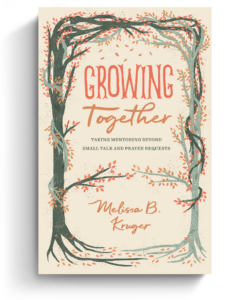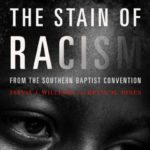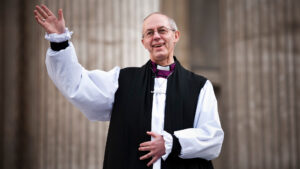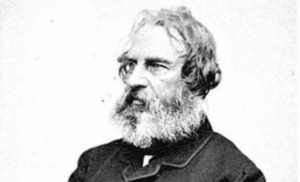Editors’ note: Come celebrate the 500th anniversary of the Reformation with TGC at our 2017 National Conference, April 3 to 5 in Indianapolis. The theme is No Other Gospel: Reformation 500 and Beyond. Space is filling up fast, so register now. Prices increase after Reformation Day (October 31).
It was 1529. Various reform movements were at work, purifying the church in Wittenberg, Strasbourg, and Zurich.
It was clear some of the leaders knew one another: Martin Bucer first heard Martin Luther in Heidelberg in 1518 when both were still monks. Luther and Huldrych Zwingli knew of one another. Publicly, Zwingli praised Luther, calling him a “Hercules” and a “faithful David” who fought the Lord’s battles.
These leaders knew that each worked in the midst of challenging political contexts. Luther’s situation in Germany was intense. Charles V demanded the German princes submit to his leadership and work against the Lutheran reformation. In response, the princes issued a formal appeal against the emperor’s demand.
Protestantism was born that day.
Zwingli’s situation wasn’t much easier. The previous five years saw a number of reforms come to Zurich. While the city council supported Zwingli, he was attacked by a group of radical reformers, the Anabaptists. To the Anabaptists, Zwingli wasn’t going far enough in following the Bible, especially when it came to the nature of the church and candidates for baptism. Bucer, on the other hand, was able to navigate the politics of Strasbourg a little easier. On the edge of the Holy Roman Empire and without Anabaptists, Bucer patiently sought incremental change.
Luther vs. Zwingli

Wouldn’t it make sense for these three centers of reform—Wittenberg, Zurich, and Strasbourg—to come together to present a united reformational front? Perhaps they could strengthen each other’s hands in their own locations while representing themselves to city councils and Hapsburg emperors as “the Reformation.” Plus, if the sides could present a united front, they would strengthen the hands of the German princes who risked both religious and political capital in this developing Protestantism.
That was what Bucer thought. Because he was a friend of both Luther and Zwingli, he brought the two reformers together—along with others on both sides of the growing Lutheran and Reformed divide—for a conference at the Marburg Castle in Germany. This Marburg Colloquy, as we know it, took place October 1 to 4 in 1529.
Central to the debate was the nature of Christ’s presence in the Lord’s Supper. This wasn’t the first time these issues had been discussed in public—both Zwingli and Johannes Oecompampadius, reform leader in Basel, held views of the Supper that differed significantly with Luther’s. The Wittenberg reformer knew this, which is why he didn’t want to meet in the first place.
Luther recognized the Roman Catholic Mass had significant theological and even metaphysical problems. The Catholics taught that, during the Mass at the words of institution, the substance of the bread truly, corporally, and carnally became the body of Jesus.
Like John Wycliffe before him, Luther recognized that this view created problems metaphysically. If priests had power to transubstantiate, then how could we have a basis for knowing anything? How could we trust our senses if bread could retain the appearance of bread but something else entirely?
Yet Luther wanted to keep the language of “this is my body” when it came to the bread. So he taught that Jesus’s body was everywhere through a communication of his divine attributes (omnipresence) to his human ones (bodily existence). During the words of institution, the body of Jesus, which is ubiquitous, was united to the bread in such a way that it was “with and under” it. There is a real presence of Jesus’s body in the Supper.
Zwingli rejected this view. He believed the church was the body of Jesus; when the church participated in the common bread and cup, it was formed into Jesus’s own body. Something mystical did happen—as historian David Steinmetz notes, Zwingli wasn’t a bare memorialist—but it happened to the people, not to the bread. The “is” in “this is my body,” then, was more symbolic, pointing to what happens as the church takes the meal.
Divided Over Communion
As one reads the transcript of the Marburg Colloquy, it’s evident neither Luther nor Zwingli was prepared to compromise. Both Bucer, who later signed the Augsburg Confession, and also John Calvin held views between the two, as did Luther’s lieutenant Phillip Melanchthon.
It’s fascinating to consider what would’ve happened if Bucer and Melanchthon had been the main participants in the colloquy; perhaps instead of separate reformations, a single reformation would’ve linked together in a common church.
As it happened, when the reformers issued their common statement, they agreed on 14 consecutive points of doctrine. The Lutheran and Reformed streams agreed on the doctrine of God, original sin, justification by faith alone, the necessity of preaching and baptism, good works, and the relationship to civil authorities. It was only the final point that divided them: “the sacrament of Christ’s body and blood.”
Both sides agreed communion should be in “both kinds” (bread and wine available to all believers), that the Supper involves “the true body and blood of Jesus Christ,” and that worthy reception of the Supper requires faith. But the sticking point was over “whether the true body and blood of Christ are bodily in the bread and wine.” Luther said yes, Zwingli said no, and Protestantism remained divided.
Still a Vital Matter
It’s notable that the single most important division between the Lutheran and Reformed streams remains the Lord’s Supper. For many evangelical Protestants today, dividing over the sacraments seems silly: with advancing secularism, radical Islam, and passionate anti-theism, surely we should set aside our differences on secondary matters like baptism and Lord’s Supper to unite in a common reformational front.
But considering why the Reformers didn’t unite reminds us that our view of the sacraments really does get to the heart of the doctrinal system contained in Scripture. It flows from our understanding of the gospel and affects the way we live as Christians.
Perhaps more thoughtful and vigorous engagement on sacramental issues should be part of a necessary revival of our Protestant inheritance. If we did engage this way, I think Luther and Zwingli would understand.
Involved in Women’s Ministry? Add This to Your Discipleship Tool Kit.
 We need one another. Yet we don’t always know how to develop deep relationships to help us grow in the Christian life. Younger believers benefit from the guidance and wisdom of more mature saints as their faith deepens. But too often, potential mentors lack clarity and training on how to engage in discipling those they can influence.
We need one another. Yet we don’t always know how to develop deep relationships to help us grow in the Christian life. Younger believers benefit from the guidance and wisdom of more mature saints as their faith deepens. But too often, potential mentors lack clarity and training on how to engage in discipling those they can influence.
Whether you’re longing to find a spiritual mentor or hoping to serve as a guide for someone else, we have a FREE resource to encourage and equip you. In Growing Together: Taking Mentoring Beyond Small Talk and Prayer Requests, Melissa Kruger, TGC’s vice president of discipleship programming, offers encouraging lessons to guide conversations that promote spiritual growth in both the mentee and mentor.

































